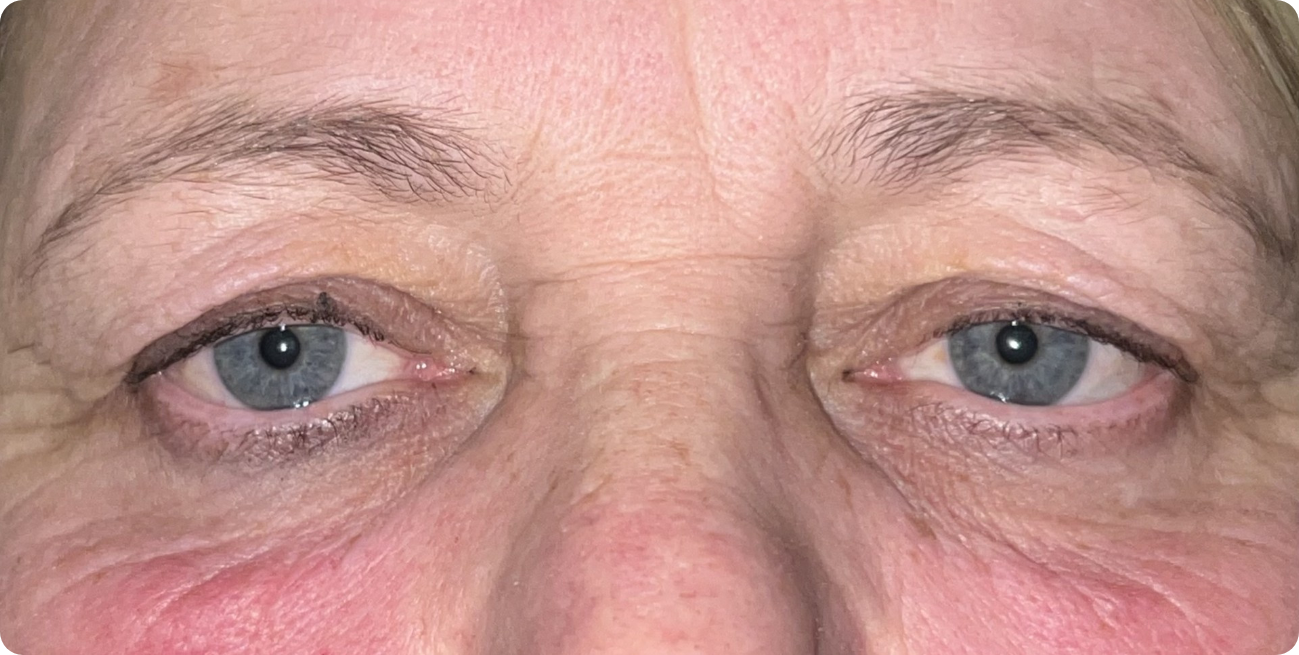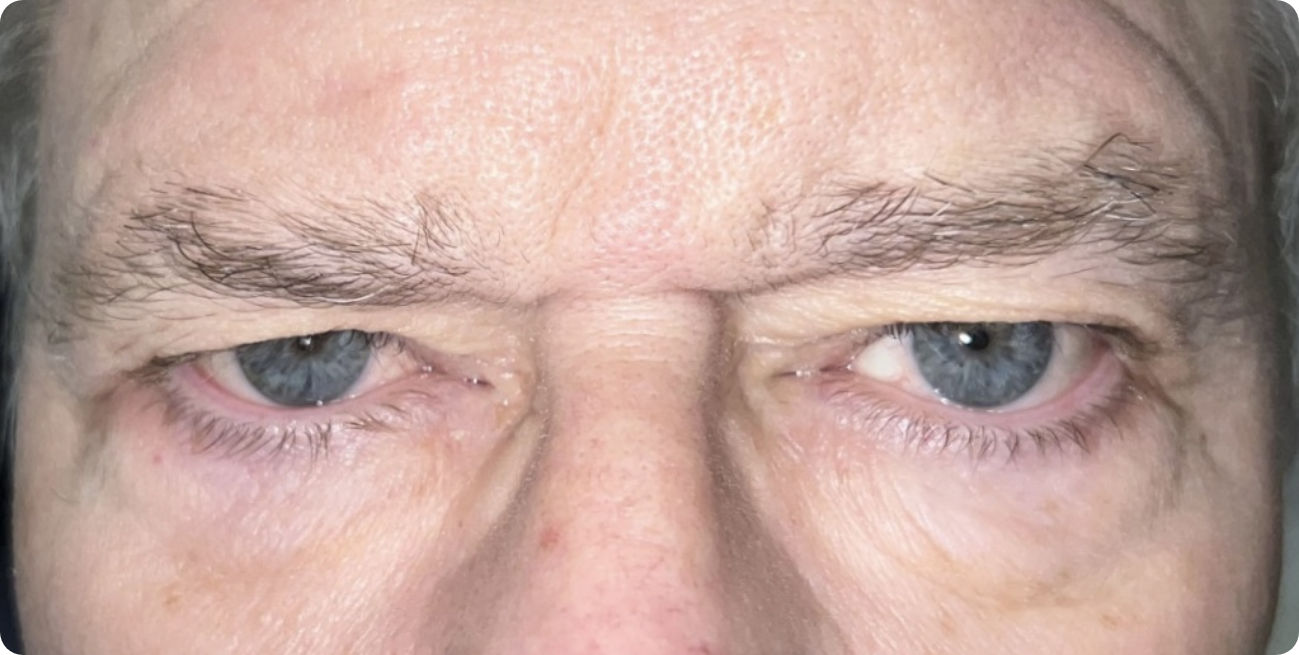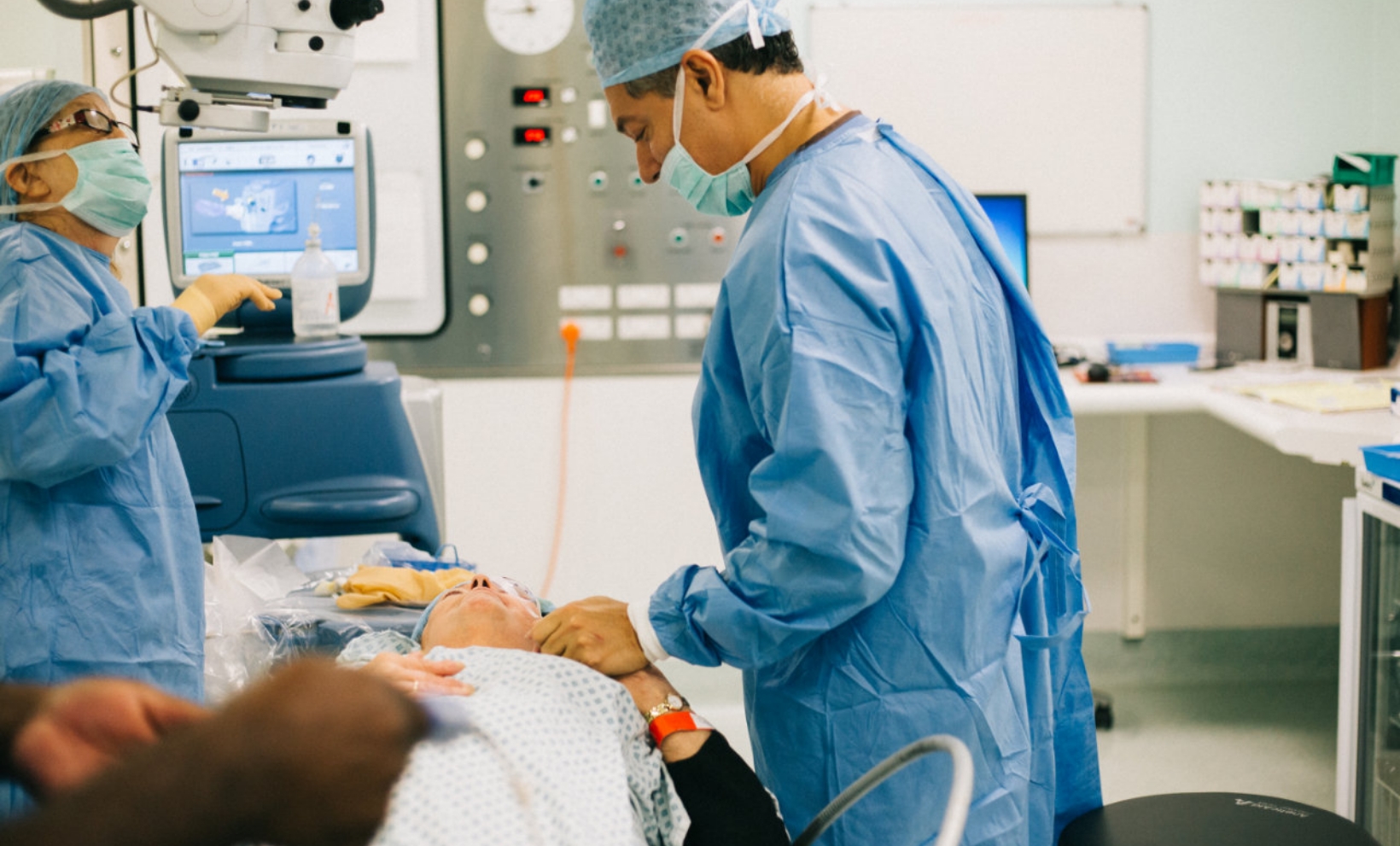
Blepharoplasty
Consultant-led treatment from Mr Hooman Sherafat, with precision care and personal support at every step.
Book a Consultation Scroll to learn more

Overview
Blepharoplasty at The London Eye Clinic
Blepharoplasty corrects hooded upper eyelids, and puffy bags under the eyes. It aims to achieve this by removing excess skin, muscle and/or fat from the upper eyelid or protruding tissue from the lower eyelid.
Symptoms
Reasons You May Seek Blepharoplasty
- Cosmetic
- Heavy hooding of eyelids causing eye strain
- Heavy hooding of eyelids impairing field of vision

About
About Blepharoplasty
What is Blepharoplasty?
Blepharoplasty corrects hooded upper eyelids, and puffy bags under the eyes. It aims to achieve this by removing excess skin, muscle and/or fat from the upper eyelid or protruding tissue from the lower eyelid. Blepharoplasty aims to provide a more youthful appearance. As aging is a continuous and progressive process with associated changes, which will continue after surgery, it is important that a long-term, rather than a short-term view of the aesthetic outcome is taken into consideration. It is vital that any excision of tissue is carried out judiciously and any aesthetic objective is balanced against preserving the functional integrity of the eyelids in closing and protecting the delicate ocular surfaces. The integrity of the eye and vision is always the primary concern. Two problems may be addressed by blepharoplasty:
- Excess Upper Eyelid Skin +/- fat: The skin and muscles of the eyelids stretch with time, sunlight exposure and gravity. Excess skin may even form a hood over the eyelid, which may interfere with your vision.
- Sagging and Bulging Lower Eyelids: Almost everyone develops some degree of bagginess under the eyes with time for the same reason as the upper eyelids. In some people there may be a family history. As well as excess skin, the fat that normally surrounds the eyeball tends to move forward causing bulging.
What results can I expect after Blepharoplasty surgery?
Blepharoplasty removes excess skin and fat from the eyelids to create a fresher, more alert appearance. Patients often find their eyes look brighter and less heavy, with subtle, natural results that enhance rather than change their overall look. In many cases, the procedure also helps improve comfort by reducing eyelid droop or heaviness. Final results develop as swelling settles, leaving the eyes looking rejuvenated and well-rested.
 Pre-op
Pre-op
 Post-op
Post-op
 Pre-op
Pre-op
 Post-op
Post-op
Treatment
Information on the procedure
- Excess tissue in the upper lid is removed through an incision, which is made in the natural skin crease above the eye.
- Protruding fatty tissue in the lower lid is usually removed through an incision through the skin just underneath the lower eyelid eyelashes (sub-ciliary).
- Fat in the lower eyelid without excess skin can sometimes be removed via an incision through the inside of the eyelid (trans-conjunctival).
- The scars that result from these incisions are quite inconspicuous when healed. Of course, women can camouflage any marks with make up, and men tend to find that the scars disappear into the natural smile lines around the eyes.
- Eyelid surgery is usually performed with a local anaesthetic (injections to the numb the eyelids) and sedation (an injection in the back of the hand that makes you sleepy and less anxious). General anaesthesia is rarely used.
- Although the time required for surgery varies from person to person, each eyelid treated takes approximately 60 minutes.

Patient Journey
What you can expect under our care

Consultation & Examination
Eyelid surgery is usually performed with a local anaesthetic (injections to the numb the eyelids) and sedation (an injection in the back of the hand that makes you sleepy and less anxious).
Your Procedure
Excess tissue in the upper lid is removed through an incision, which is made in the natural skin crease above the eye.
Recovery & Follow-up
You will be required to stay in the hospital for a minimum of 2 hours following surgery.
Frequently Asked Questions
Common questions we are asked
Got a question that’s not covered here?
Just get in touch with our friendly team we’re happy to help and always here to talk through your options.
Contact usPeople with heavy, sagging upper lids, puffy “bags” under the eyes, or loose eyelid skin that affects appearance or sight often choose blepharoplasty. An oculoplastic specialist will confirm if it’s suitable for you.
Hooman will make small incisions in the natural folds of the lids, removes or repositions fat, and smooths the skin or muscle. It’s usually done with local anaesthetic and sedation, sometimes general anaesthetic if needed.
Mild swelling or bruising is common in the first few days. Most people feel ready to return to normal activities in about a week to 10 days. You’ll receive clear aftercare guidance to support healing.
The improvement is long-lasting, though the natural ageing process continues. Many patients enjoy a refreshed look for many years after surgery.
All surgical procedures carry some risk, some of which apply all procedures. These include, infection or bleeding. Risks specific to blepharoplasty are not common but include asymmetry, over or under excision of tissue, impaired eye closure, dry eyes. More detailed I formation will be shared through literature sheets in the clinic.
Simply visit our contact page and use any of the methods on that page to contact us to get a consultation booked in at a time and location to suit you.
Ready to book a consultation?
Whether you’re looking for more information or want to take the next step, our friendly team is here to help and happy to talk things through with you.
Contact us
"*" indicates required fields
Why Choose Us
Reasons Our Patients Trust Us with their eyes.
Our patients know that they are cared for and listened to. We take the time to provide clear information about all available options, along with the benefits and risks of each. This approach gives every patient the confidence to make informed choices about their treatment, knowing they are supported every step of the way.
Putting the patient first
At The London Eye Clinic, patient care is at the heart of everything we do. Hooman is known for his caring, transparent approach, taking the time to understand each person’s individual needs and creating treatment plans that are compassionate, thorough, and patient-centred . From leading the Best Interest Ophthalmology Service for patients with learning difficulties to offering clear guidance on surgical and non-surgical options, his focus is always on doing what’s right for the patient.
Advanced eye care treatment
With extensive training at leading London hospitals, including St George’s, Guy’s and St Thomas’, and Moorfields. Hooman brings advanced expertise in oculoplastic, lacrimal, and reconstructive surgery alongside general ophthalmology. The London Eye Clinic offers a wide range of treatments, from cataract operations to delicate eyelid procedures, delivered with the latest techniques and the highest standards of care. Whether routine or complex, every treatment is carried out with precision and attention to detail.
Over 20 years of experience
Since qualifying in 1992, Hooman has gained over two decades of experience treating thousands of patients. His work is recognised not only in the UK but also internationally, performing cataract operations in Ghana, Bangladesh, and Burma, and being invited to the House of Lords in recognition of his support for the visually impaired. This depth of experience gives patients confidence that they are in safe, capable hands.

Testimonials
What Are Patients Saying?
Real stories from patients who trusted their eyes to Hooman Sherafat.
